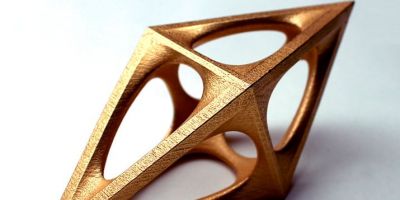艾琳•波许(Irene Posch)和埃布鲁•库巴克(Ebru Kurbak)设计的绣花电脑,看上去并不像你想象中的电脑。相反,这件作品看起来像是一件优雅的刺绣织物,配有玻璃和磁珠,以及蜿蜒的铜线图案。这些材料具有导电性能,这些导电性能以特定的模式排列,从而产生电子功能。珀奇在她的网站上解释说,磁珠顶部的金块会根据程序翻转,当不同的信号通过刺绣制品传导时,它们就会交换两边。传统上,磁珠图案纯粹是装饰性的。他们把通常隐藏在黑盒子里的核心数字程序暴露出来。用户被邀请在编程时与织物进行交互,为他们进行计算。”这篇文章提到了纺织品创造和计算之间的历史相似性,提花织机对计算硬件的发展有着重要的影响。







The Embroidered Computer by Irene Posch and Ebru Kurbak doesn’t look like what you might expect when you think of a computer. Instead, the work looks like an elegantly embroidered textile, complete with glass and magnetic beads and a meandering pattern of copper wire. The materials have co
nductive properties which are arranged in specific patterns to create electro
nic functions. Gold pieces on top of the magnetic beads flip depending on the program, switching sides as different signals are channeled through the embroidered work.“Traditio
nally purely decorative, [the work’s patterns] defines their function,explained Posch on her website. “They lay bare core digital routines usually hidden in black boxes. Users are invited to interact with the piece in programming the textile to compute for them.”The piece is a reference to the historic similarity between textile creation and computing, for example the Jacquard loom being an im
portant influence on the evolution of computing hardware. Posch is a researcher and artist with a background in media and computer science who explores the how technological seeps into the fields of art and craft, and Kurbak is an artist and designer who investigates the hidden politics of everyday spaces and routines. You can learn more a
bout their work and partnerships here or here. (via Kottke)














 13
13
 设计欣赏
设计欣赏
 设计欣赏
设计欣赏
 设计欣赏
设计欣赏
 设计欣赏
设计欣赏
 设计欣赏
设计欣赏
 设计欣赏
设计欣赏
 设计欣赏
设计欣赏
 行业资讯
行业资讯